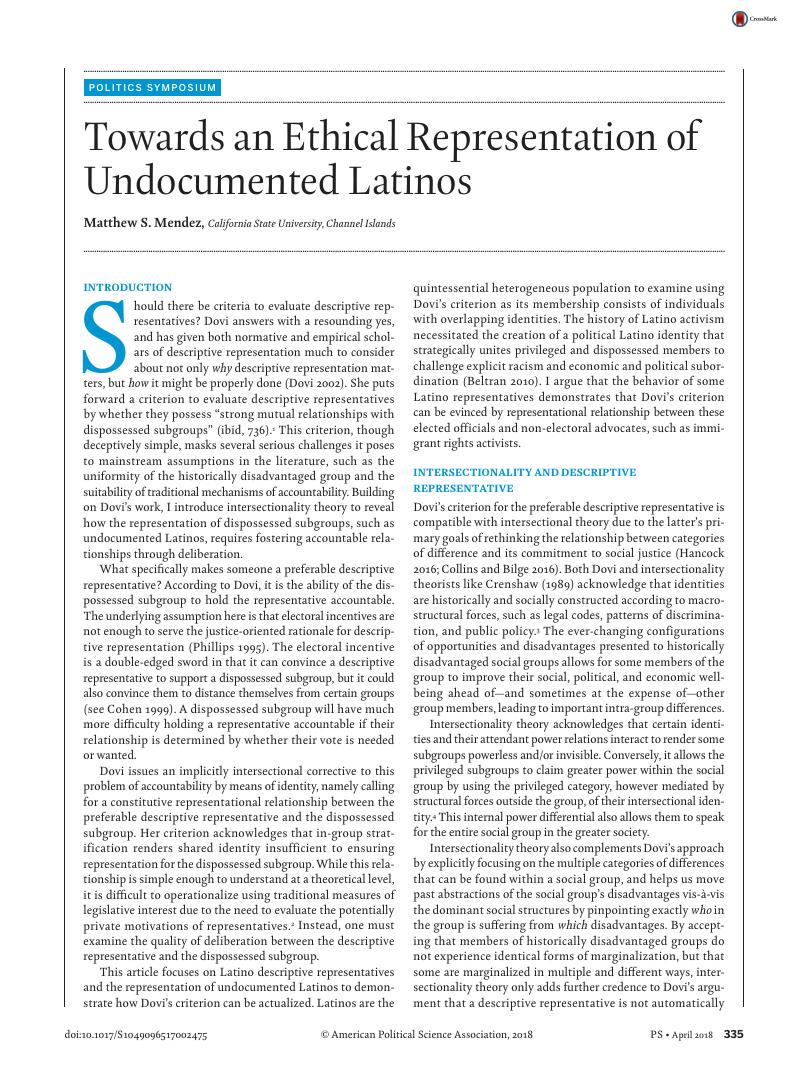Crossref Citations
This article has been cited by the following publications. This list is generated based on data provided by Crossref.
Pleites-Hernandez, Giovanny D.
and
Kelly, Nathan J.
2022.
The Representational Deficit of Latinxs in the U.S. House of Representatives.
Hispanic Journal of Behavioral Sciences,
Vol. 44,
Issue. 2,
p.
99.





